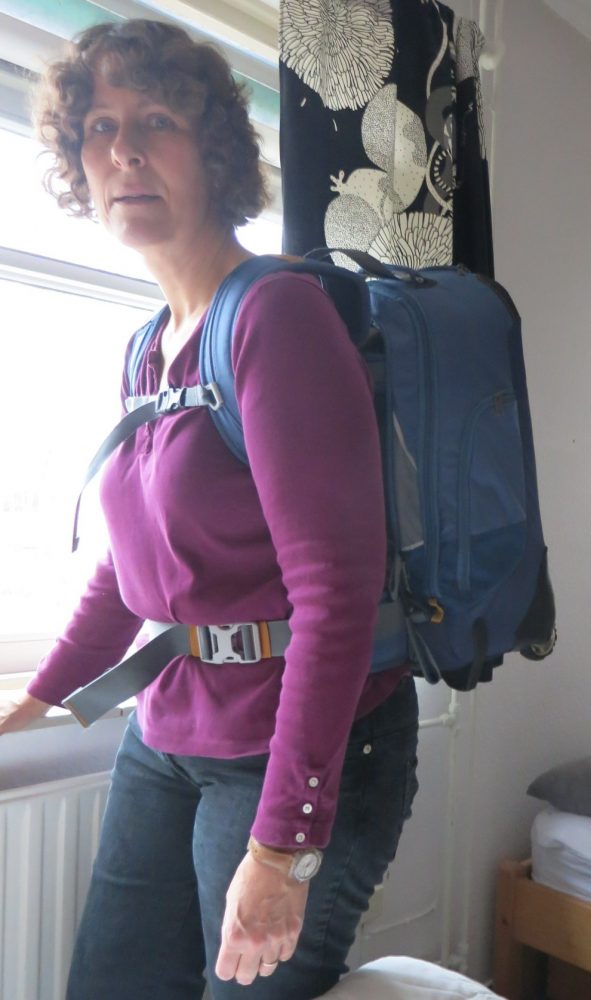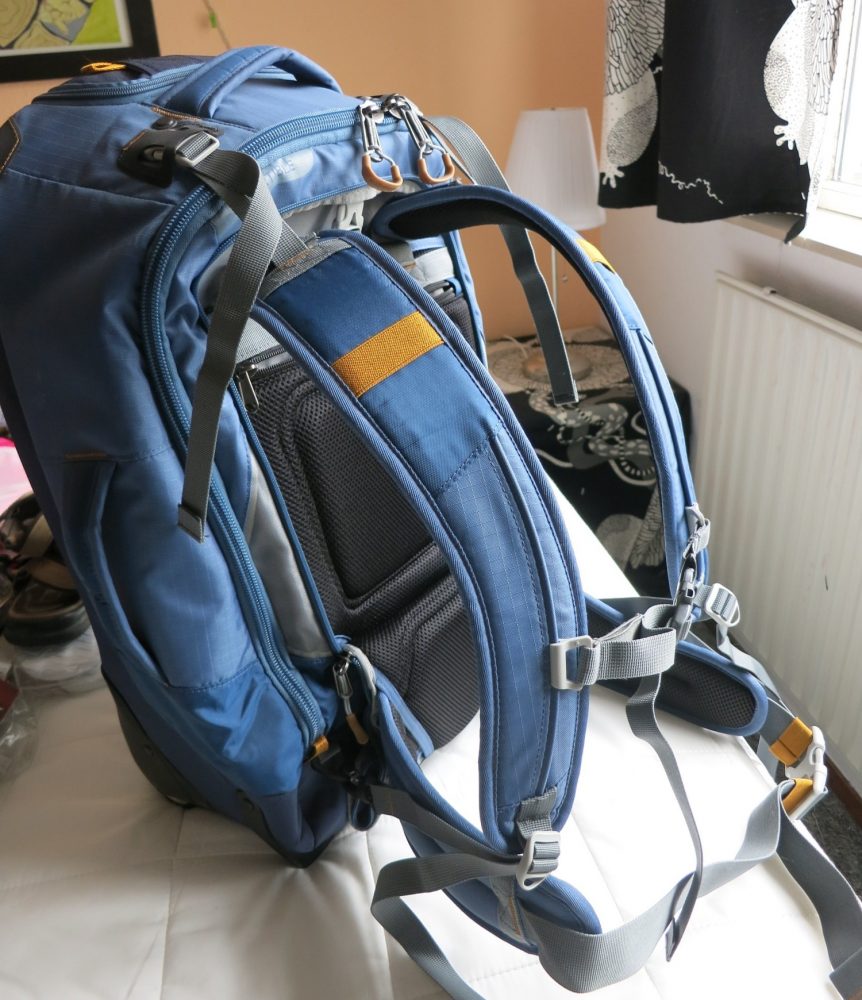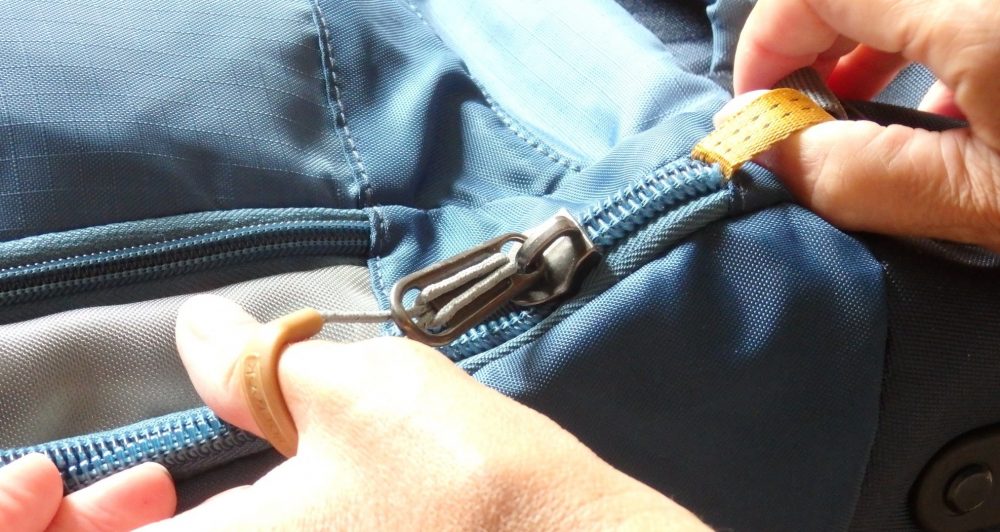Eagle Creek Backpack Review
For the two solo trips I took this year—one to Guadeloupe, Martinique, New York and Spain, and one to Hong Kong, Singapore, Japan and South Korea—I needed a very specific kind of luggage.
The problem
Since I was traveling solo, I needed to travel as light as possible. I also needed luggage I could manage completely by myself. Thirty years ago, the answer would have been a backpack, the kind I carried around Europe one summer in the early 80’s.
At my age, though, I prefer a wheeled bag, but when that isn’t possible—for instance if the path isn’t paved, or if you need to travel up a lot of stairs—it’s really uncomfortable to carry a wheeled bag any distance.
The solution
I decided to try to find a wheeled bag that converts to a backpack. I found many on-line in many sizes, anywhere from 20 liter to 85. I had no idea without seeing the bag in person which I would like, so I went to a local sporting goods store.
That narrowed my choices considerably, but I could get a better idea of what the sizes were. I ended up choosing Eagle Creek‘s 35-liter Flip Switch 22 Wheeled Backpack for which I paid full price: €235. It seemed like a size I’d be able to carry and, more importantly, to pick up from the ground and get onto my back by myself.
The advantage of choosing such a small backpack, I figured, was that it would force me to pack more carefully than I normally do, and it worked!
How it went
What I liked about this particular bag was that the backpack straps were proper backpack straps. In other words, they were padded, and included a padded waist strap. The belt is key, since it places the bulk of the weight on your hips rather than your shoulders.
The backpack and waist straps can be zipped away when you’re not using them. This has some drawbacks, however, in that a) they have to be unclipped from the bag to zip them away, which means any switch from backpack to wheeled or vice versa is not a quick process. You have to stop and assemble or disassemble the backpack.
Another drawback of this system is that the straps are quite bulky, so the outside pocket bulges when the straps are stored away. There ought to be a better way of folding them…
On the other hand, the other bags available had only shoulder straps. You couldn’t carry them for any length of time without a lot of discomfort, since you’d be carrying all of the weight on your shoulders.
On both trips, but especially the second one, when I was moving from place to place quite often, I was very happy with this bag.
35 liters ended up to be the perfect size for my needs. I could pack enough in it to travel for a week in hot weather before doing a wash. It weighed, including the contents and the bag itself, about 10 kilos, which was light enough for me to pick it up and put it on my back, if needed, and for me to heave it up into an overhead compartment on a plane or train.
I was impressed with various details I didn’t notice until I started using it. The wheels, for example, are bigger than most and rubber edged, which made for a smooth ride. When you use it as a backpack, or check it in on a plane, the handle on top can be zipped into a recessed pocket to hide and protect it.
The zipper has a good solid pull on it, with a large loop. At the end of the zip, a loop has been sewn into the seam so that you can grab it with one hand (my right hand in the photo below) while you pull the zipper in the other: a counter-force which would allow you to zip the bag up even if it was a bit over-packed. I was impressed with the thoughtful details like this.
For example, sometimes, particularly in Japanese metro or train stations, I needed to carry the bag up or down a flight or two of stairs: not enough distance to bother unpacking the straps. A clever feature allowed me to carry the bag in front of me: a hand grip both on the top and the bottom of the bag, instead of just on the long side. That way I carried it horizontally across my stomach, keeping my back relatively straight. If I had had to carry it by a side handle, it would have meant leaning to one side to counterbalance its weight.
I never took the bag out in the pouring rain, but it kept my things dry in a light rain.
All the clips and other attachments held up well, as did the fabric both inside and outside. The handle seems quite solid too, and not likely to break.
I measured the bag and it is slightly bigger than the published limits for most carry-on bags. However, even on discount airlines in Asia, I was never challenged on its size. At Schiphol I tried it in one of those racks designed to check if your bag is too big, and it fit just fine. It fits without a problem in an overhead compartment on a plane. I suspect it might get challenged if you over-packed it so that it bulged.
There are no inner compartments or divisions, which was fine with me, but might be considered a negative point. Eagle Creek sells packing organizers to fit its bags. Since I had already spent so much on the bag itself, I didn’t get those, but they might indeed work well to keep your things organized and make it easier to pack and unpack.
Looking at Eagle Creek’s website as I write this, I see that this backpack isn’t even listed. I do find it, however, on Amazon and other outlets. Eagle Creek has other similar versions on its site: bigger, smaller, or with the possibility of attaching or detaching a smaller backpack from the larger.
Do I recommend it? Yes. For my purposes it was, except for the difficulty with switching between backpack and wheeled modes, an excellent bag.
Note: I paid full price for this bag, and have not received anything in return for this review.






Does it come in pink?
Haha! No idea!